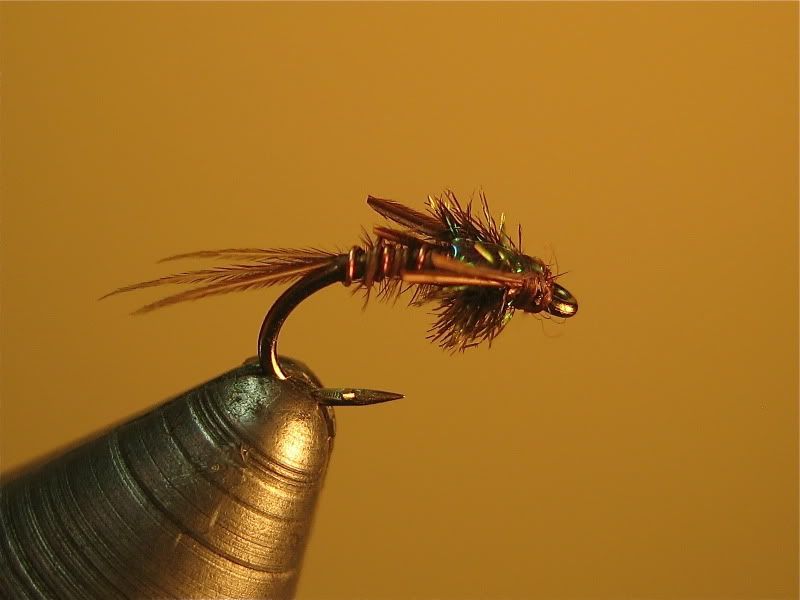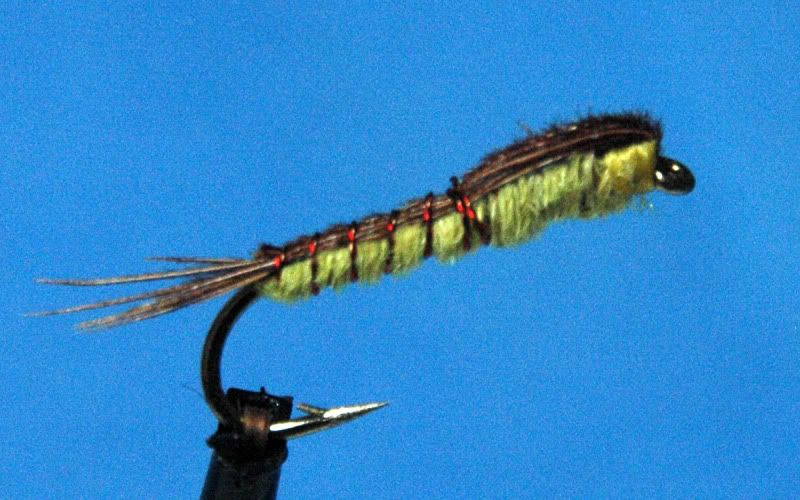 Quite similar ...
Quite similar ...

Originally Posted by
Allan

I know there are many recipes for the Pheasant Tail nymph and that the original had only 2 materials. I'm just curious about what the favorite(singular) recipe that you prefer to tye and use? Mine is:
thread - black thread
tail - pheasant tail fibers
abdomen - pheasant tail fibers ribbed with copper wire ( back to front only )
wing case - none
thorax - peacock herl
legs - grizzly hen hackle ( soft hackle )
Allan
... with some bold changes. 
With friend.

John
Last edited by JohnScott; 02-24-2012 at 02:40 PM.
The fish are always right.




 Reply With Quote
Reply With Quote



